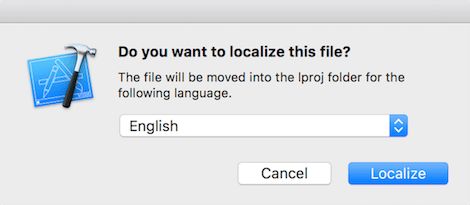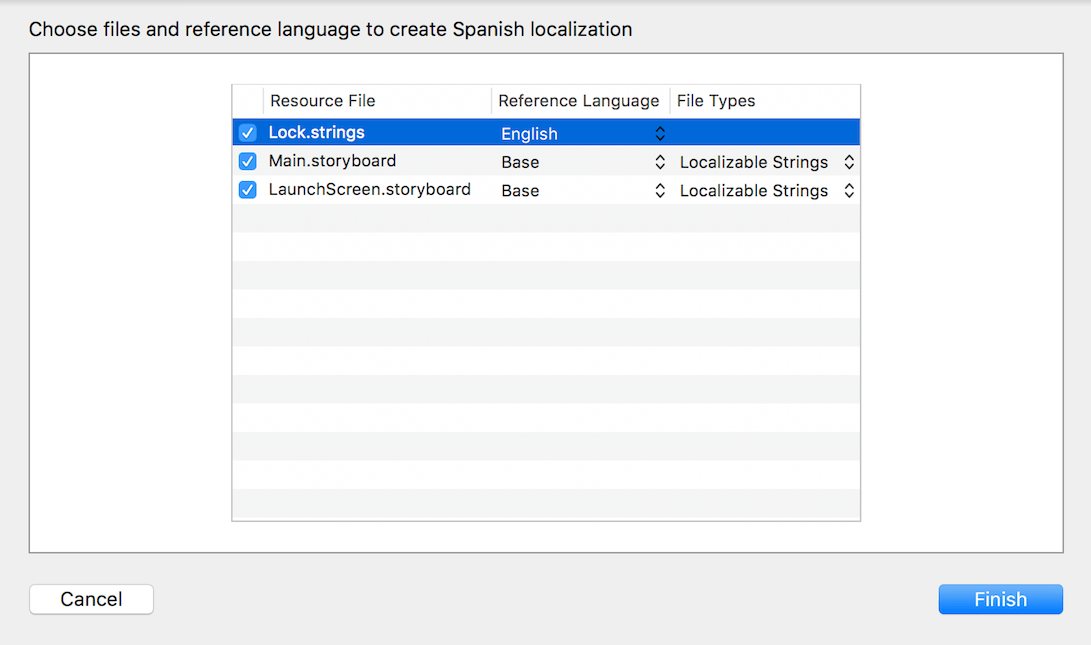Lock.strings file and define values to be used for the various text items that Lock might display.
More information about how to handle languages can be found in the official Apple documentation on Internationalization and Localization
Lock String Values
For a full list of the terms used by Lock, see the base Lock.strings file in the Lock.swift repository.Providing alternative English strings
If you want to change some or all of the existing terms, you can do this by downloading and adding the Lock.strings file to your project. Select the Lock.strings file and in theFile inspector click on Localize...

English:

// Forgot password "com.auth0.lock.database.button.forgot_password" = "Did you forget your password?"; // tos & privacy "com.auth0.lock.database.button.tos" = "Signing up is an indication of your agreement to our terms of\n service and privacy policy";
Supporting other languages
To add another language you first of all need to add the new language underProject/Info


Notes
Some terms use parameters and it’s important to note their placement in your translation. In particular multiple parameter terms such as:// No more than %@{count} identical characters in a row (such as, \"%@{identical sample}\" not allowed) "com.auth0.lock.error.password.no_more_identical" = "No more than %1$d identical characters in a row (such as, \"%2$@\" not allowed)";
